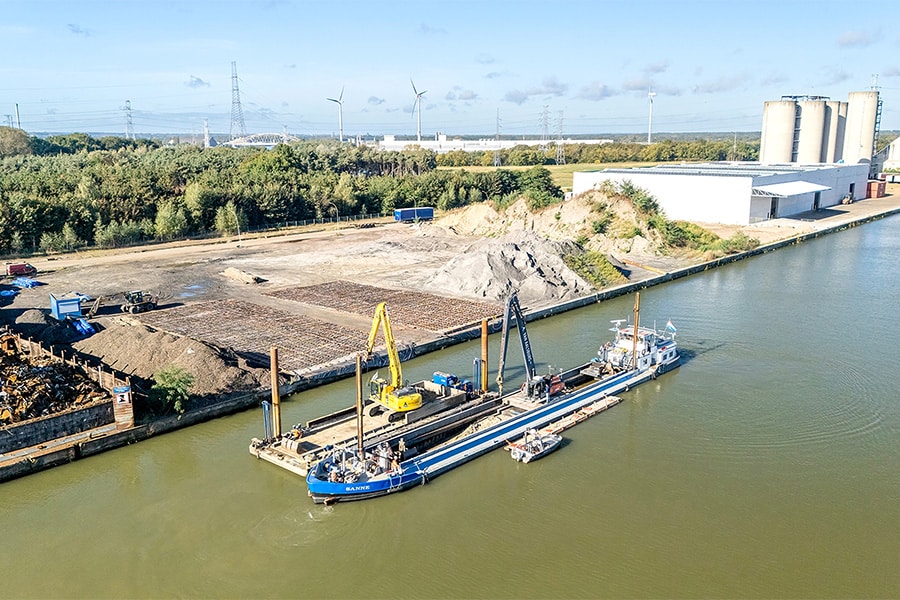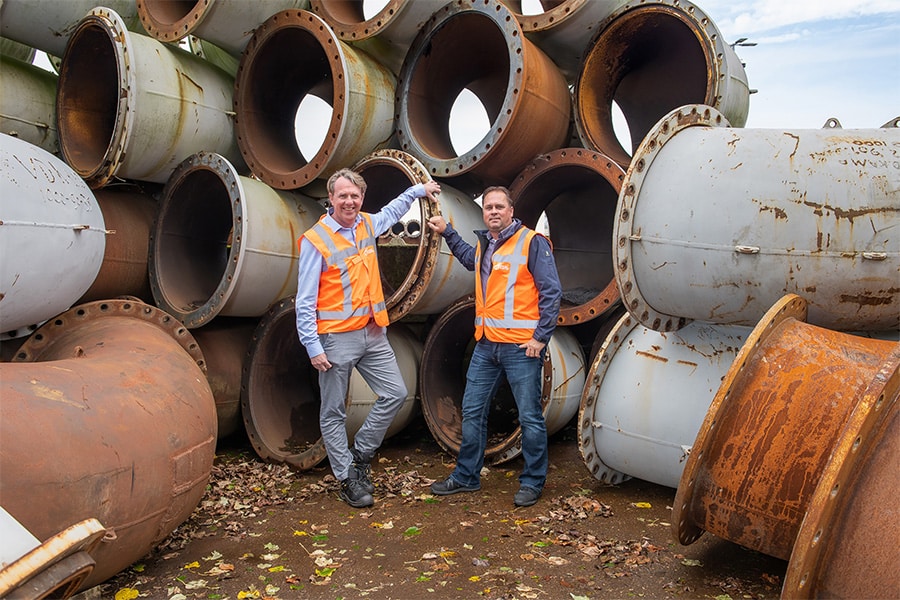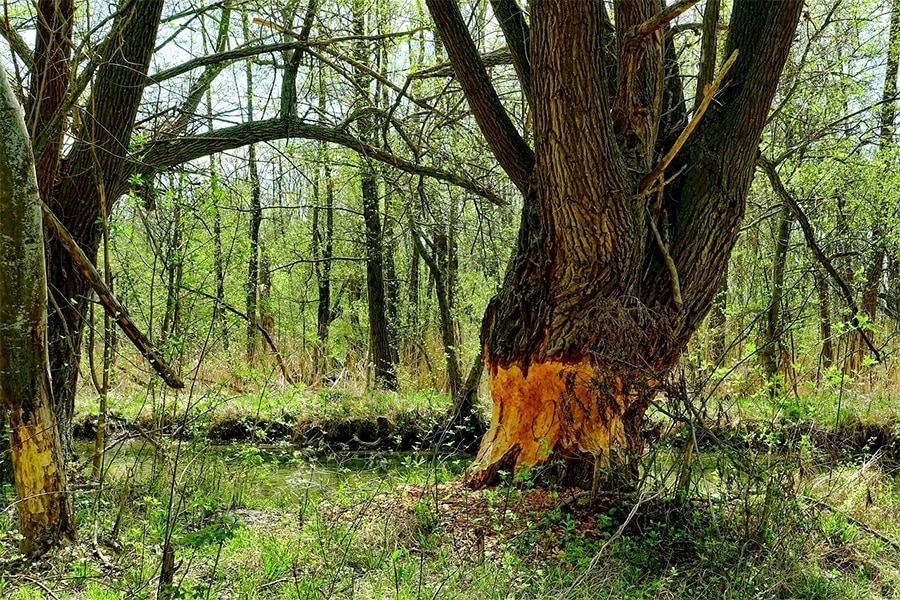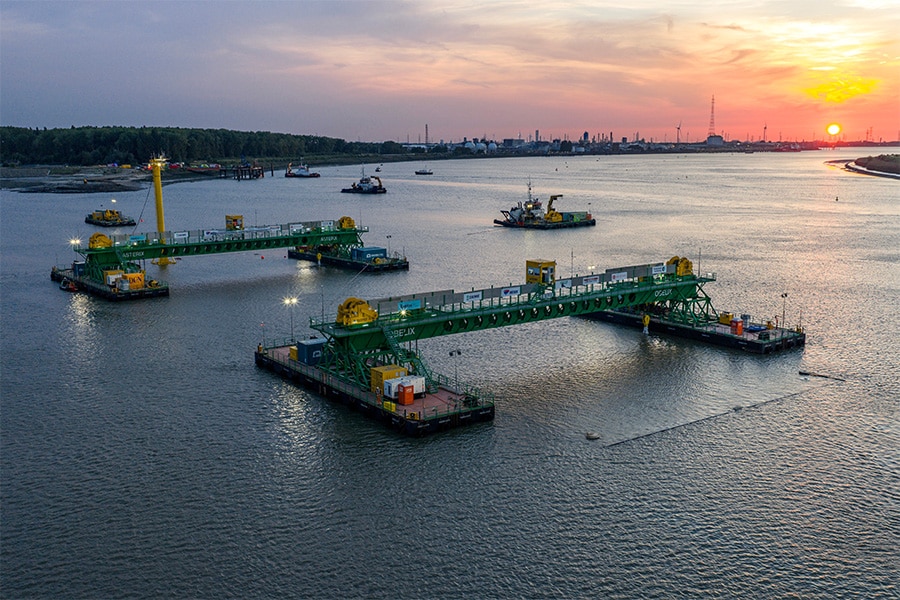
Van Aalsburg: Sustainability and innovation with willow in lead role
Van Aalsburg has been a household name in hydraulic engineering for decades. They are best known for their natural shoring, sinkers, laying banks and drift fences. During Infratech 2025, the growing appreciation for natural building materials was evident, and the increased interest was evident even on the show floor, said Dick van Aalsburg. "Our mission is: to protect nature with nature - and that approach is gaining recognition." This was evident from the honorable mention of Martin Wijnen, director general of the Department of Public Works, just before the presentation of the InfraTech Innovation Award 2025.
Wider use of the willow
Van Aalsburg is looking beyond known applications and taking new steps in sustainable construction. As a member of the Beyond Wood cooperative, together with partners they are developing 100% natural board material from willow fibers. This innovative product is water-repellent, fireproof and perfect for biosbased construction. "We find that governments and clients are increasingly open to these sustainable alternatives," says Dick. "Water boards, provinces and municipalities see the potential of willow structures to meet their Water Framework Directive (WFD) targets in an ecological way."

Willow on a world tour
Not only in the Netherlands and Belgium is Van Aalsburg making an impact, they are currently shipping large quantities of willow and specialized equipment to the Ivory Coast, where they are working with Belgian hydraulic engineering firm Deme to protect a harbor dam. "Cradles of rope and loose willow wood are already on their way, so we can build more than 25,000 m2 of sinkers there," says Dick. With this, the company shows that Dutch knowledge and nature contribute to sustainable water management worldwide.
Green innovation at home
Sustainability also remains a focal point within Van Aalsburg's operations. Soon the third electric excavator will be put into service: a 22-ton Sany crawler crane. It is also planned dar install 500 solar panels this year and a 1 megawatt battery with four fast charging points of about 200 kW per dispencer. "The power grid is full, so we are partly solving it ourselves," says Dick. "Investing in sustainability is necessary, but financially tough. With CO2 certification of our willows, we generate 'carbon credits' with which we can finance further sustainability." Dick also mentions that their willow fence recently received an A+ green label. "Not civil engineering related, but it is a recognition of the environmentally friendly properties of this archetypal Dutch natural product."
Sustainable dredging at the Lauwersmeer dike
Van Aalsburg also remains fully active in the Netherlands. We previously wrote about the dyke reinforcement Lauwersmeerdijk-Vierhuizergat, where Van Aalsburg is collaborating on a nature-friendly tidal culvert, combining dredging with ecological restoration. "This ecological restoration is essential for the biodiversity of the area and contributes to climate adaptation by allowing nature to do its job in reinforcing the dike and improving water quality." The project shows how innovation, craft, natural materials and sustainability go hand in hand within hydraulic engineering. A beautiful photo of this project graces the cover of this issue.
With a strong mix of tradition and innovation, Van Aalsburg remains a leader in sustainable hydraulic engineering. Whether it's a dike in the Ivory Coast or bio-based construction in the Netherlands, the future is more natural than ever.
Heeft u vragen over dit artikel, project of product?
Neem dan rechtstreeks contact op met Van Aalsburg BV.
 Contact opnemen
Contact opnemen




